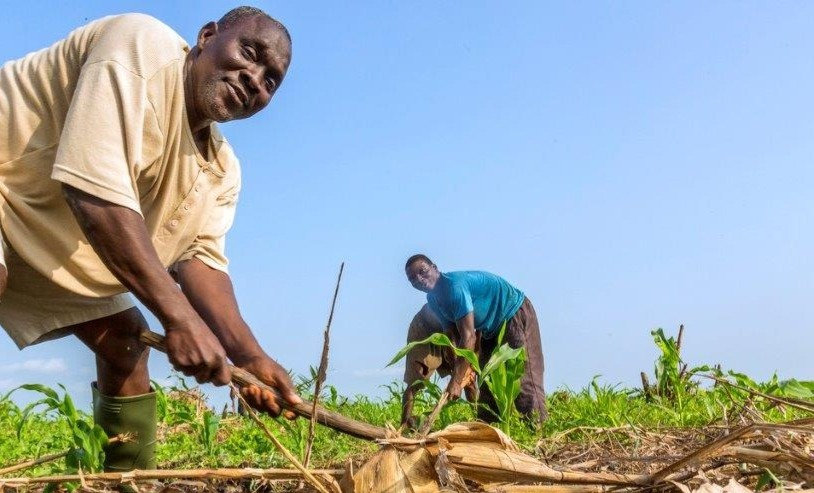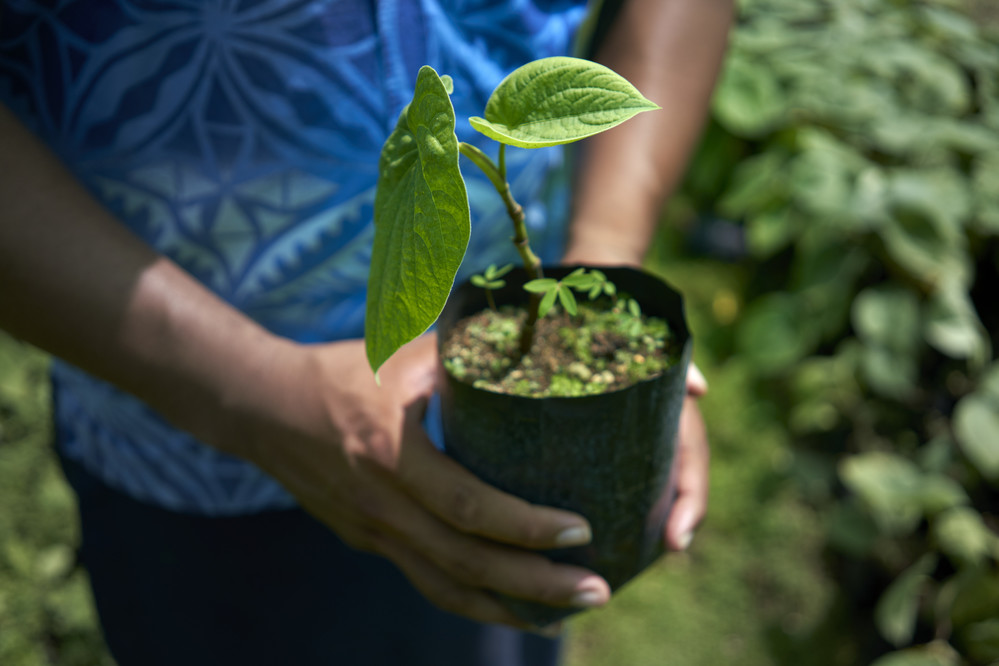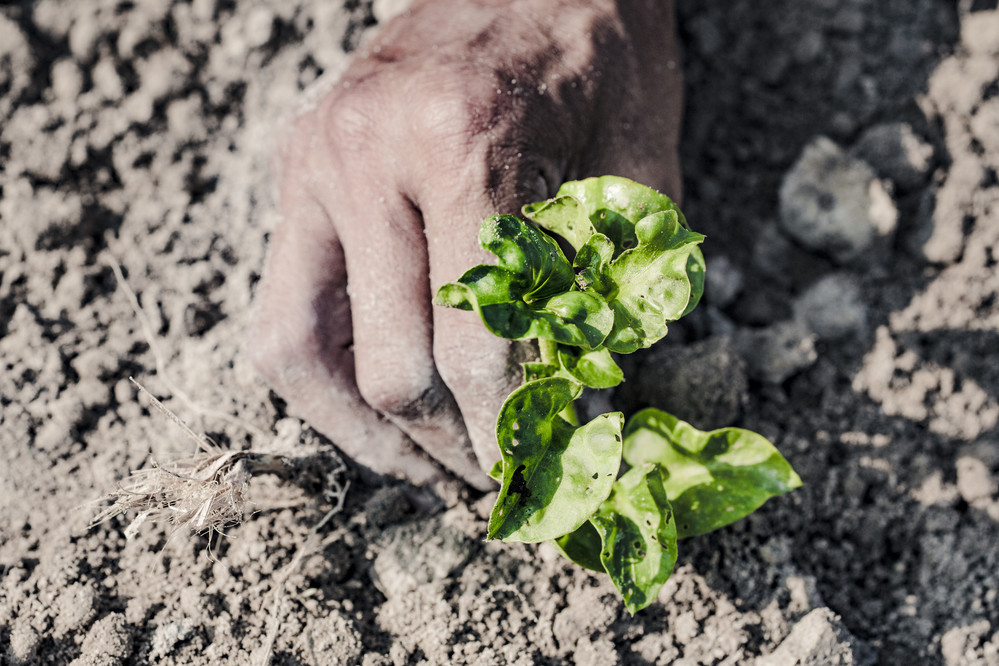Perspectives is a series that highlights emerging issues in the area of agri-SME and smallholder finance from the perspective of practitioners and thought leaders from within and outside the SAFIN Network. In this interview, Johanna Nyman, Head of Inclusive Green Finance at the Alliance for Financial Inclusion tells SAFIN about how policies and knowledge can unlock access to green finance for small-scale farmers and agri-SMEs.

Photo credits: IFAD/Andrew Esiebo/Panos
Please tell us about the Alliance for Financial Inclusion, how it addresses agriculture and your role there.
The Alliance for Financial Inclusion, or AFI in short, is a network of 85 institutions from 72 countries with a mission to advance financial inclusion. Our member institutions include central banks, ministries of finance and other financial regulators that work to ensure access to credit, savings, insurance and payment systems for the underserved.. AFI empowers its members to formulate, implement and advocate for sustainable and inclusive policies through peer learning and policy guidance. At AFI, I lead work on advancing inclusive green finance, including the inclusive green finance working group, where agriculture is quite prominent. Inclusive green finance aims to mitigate climate change and build resilience among individuals, households and Micro, Small & Medium Enterprises (MSMEs) through improved access to financial products and services. For small-scale farmers or SMEs, this translates into accessing formal savings or insurance when natural disasters occur, which is particularly important for those engaged in primary production whose crops or livestock may be affected. Effective payment systems during emergencies are also essential for climate mitigation among vulnerable populations. Studies across our network have shown that when disaster strikes, short-term loans from friends and family are a key coping mechanism for those in affected areas, not only for initial responses but also for recovery efforts. AFI works to improve the policies that can steer access to such services across sectors, including in agriculture. In addition, access to credit can be essential both to green operations and to invest in more resilient agriculture practices.
AFI recently published a study on green credit guarantee schemes for MSMEs. Can you please share some of your key findings and how such tools have they been applied effectively in agriculture?
AFI’s working group on inclusive green finance has generated a keen interest in Credit Guarantee Schemes (CGS). These risk-sharing mechanisms can reduce the risks of lending to climate-vulnerable people or small businesses that financial institutions would otherwise consider too risky. In the agricultural sector, such schemes provide funds to share risk with financial institutions in the event of a loan default by a farmer or agri-SME. One key finding from our recent study is how Credit Guarantee Schemes allow lenders to build capacity and lend to new green sectors while improving their financial and business understanding of MSME borrowers. We have seen that the definition of green finance and resilience building varies in each country context, and some countries are responding to that by developing green finance taxonomies. These schemes are a good entry point for financial institutions and regulators to pursue a common understanding to inform future investment decisions. We also found that CGS can kick-start lending to early-stage green markets by reconciling the initial phase of uncertainty where financial institutions may perceive certain target groups as too risky. CGS is now being explored for green lending to MSMEs, including in the agricultural sector.
Risk-sharing schemes for green agricultural lending, including to agri-SMEs, have gained momentum in recent years. What are the main policy changes or frameworks driving this trend?
Risk-sharing schemes are one of many policy interventions that central banks or financial regulators can develop, and I believe we will see more of them in the coming years. While these schemes are nothing new, their use in green finance for agriculture is still nascent. One key factor in driving this is the improved shared understanding of green finance at the national level. But there are also other ways for central banks and financial regulators to promote access to financial products for green purposes. For example, the central bank of Bangladesh issued a regulatory target for green finance at 5% of all lending and accompanied this with a list of projects considered ‘green’. With this in place, lending towards green projects in the country increased over time. Incentives are also a key factor in this as well.
Green finance is considered a new frontier for many financial institutions that target agri-SMEs. What are the main roadblocks to be cleared for it to be mainstreamed in their lending portfolios?
Some of the current challenges are the need to define ‘green’, in order to target risk-sharing practices to these specific purposes or sectors. This is challenging especially when ‘green’ also includes adaptation and resilience building practices. A definition for green finance is not impossible to establish at the national level, but it requires cross-sectorial collaboration and understanding. When such definitions are in place, they may need to be regularly updated because, like climate change, national climate mitigation and adaptation policies are constantly evolving.
Another key challenge is capacity and knowledge. Lending to green projects or promoting green finance requires that everyone involved understands this new topic and has the resources to work with it. That means much effort needs to focus on building the capacity of policymakers, central banks, financial institutions, and end users. At AFI, we have found that peer learning across countries has worked particularly well for financial regulators to exchange experiences about how they respond to different challenges in their different national contexts.
How do you see the landscape of green finance for agri-SMEs evolving over the coming year? What role can SAFIN play to support a move towards more sustainability and resilience?
There needs to be an enhanced focus on building resilience and promoting climate adaptation in the agricultural sector in the coming years. This will require more financial resources available for this purpose, as well as adequate technical assistance for agri-SMEs. In all of this, I see access to financial services and products like insurance, credit, formal savings and payment systems as key. Within this conversation, I believe SAFIN can build bridges across stakeholder groups, given the diversity of your network. Such convening and consensus-building efforts will likely require sufficient time to achieve a common understanding and conducive environment.
Johanna Nyman, Head of Inclusive Green Finance, Alliance for Financial Inclusion (AFI)

Johanna Nyman is the Head of Inclusive Green Finance at the Alliance for Financial Inclusion (AFI), a global network of policymakers and regulators working towards inclusive finance for all. She supports AFI's membership in developing and implementing policies and regulatory reform to advance Inclusive Green Finance. Before joining AFI, Johanna worked with the European Union's global climate policy, green finance, and climate security. Her educational background is in environmental sciences and climate policy, and she has published several scientific articles on modelling potential climate change impacts in the Arctic tundra.

